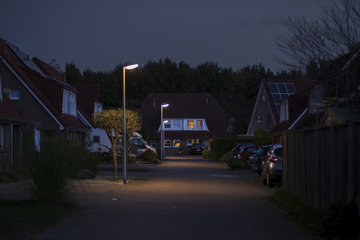"If the European Union wants to be a single market, it also must jointly regulate external access."
The profound influx of refugees has plunged the EU asylum system into a crisis In this interview, Ulrich Becker, Director at the Max Planck Institute for Social Law and Social Policy talks about " law that is lagging behind reality", opportunities for remedies, and the results of a new study on the social protection rights of refugees in Europe.

Mr. Becker, in Germany we have been experiencing a huge wave of solidarity with migrants. At the same time, people are asking themselves how it is possible that refugees travel through several EU countries, and then are more or less free to decide where they can apply for asylum.
This is, in fact, an exceptional situation for the law. It lags behind reality. This apparent freedom of movement is not compatible with EU law. According to the so-called Dublin Regulation, the member state through which a migrant first enters the EU is responsible for processing the asylum application and therefore also for sheltering the refugees during this procedure. But many border states can no longer afford the costs of administrative efforts involved and therefore allow the refugees to travel onwards. If migrants cross the border, the actual country of destination should principally return them to the EU member state responsible. The country of first entry remains responsible, even if the asylum application is filed elsewhere.
But is it not true that such a retransfer to certain border states is legally inadmissible?
This is the case if a country systematically fails to meet the minimum standards for protection and care provision and where asylum seekers may be subjected to inhuman treatment – as happened in Greece, for example, in 2013. This is what the European Court of Human Rights judged, as subsequently did the European Court of Justice in Luxembourg, and the German Federal Constitutional Court. Of course, this represents a violation of the law on the part of the relevant country responsible for the asylum procedure. Factually, however the country in question is thus exonerated from its obligation of accepting and re-accepting refugees. Maybe the country's resources are strained. But the mechanism also carries the risk that a country deliberately bypasses the regulations - and is ultimately rewarded for this as refugees are not allowed to be sent back there.
Is there a danger of such a development taking place in Hungary?
In principle, an assessment has to be made for each EU Member State as to whether it fails to meet asylum standards not just in individual cases, but on a general basis, that is to say, systematically, and as to whether refugees face the danger of inhuman treatment there. Of course, the danger of this happening is greater in some countries than in others, and Hungary has already provided cause for corresponding evaluations. However, this must not be confused with Hungary’s efforts to control border crossings by building a protective fence. Such control alone is not unlawful, if access to asylum procedures is still guaranteed.
Do you see further errors within the EU asylum system?
Basically, the admittance of refugees should be much more a pan-European task than it is now. If we want to have freedom of movement within the EU, then the question of who should get access from the outside should be a pan-European matter. While we have created the relevant rules with the Dublin Regulation, we have not provided sufficient support to the countries that are to carry out this task in the first place, the countries that are the first point of entry for asylum seekers at the EU's external borders. The second reason why the system does not quite work is this: The right to asylum is subject to certain conditions which must be ascertained in an evaluation procedure. We cannot avoid such procedures. They have to be managed more efficiently. Perhaps large preliminary reception centres for refugees as envisaged by the EU, for example in Greece, would help in this respect. In the current situation, another option would be to introduce further legal instruments that permit greater effectiveness.
So what are these legal instruments?
The EU could do much more if it made significantly greater use of the quota method. Individual states do this on a national basis, but EU law permits this also on a European level. This would take some pressure off the border states as, for example, Syrian refugees with a temporary protection status could be brought directly to Europe from Lebanon, Turkey, or Jordan. This would considerably speed up the procedure. Migrants would not risk their lives having to cross the Mediterranean Sea by boat. Human traffickers would no longer cash thousands of euros per refugee. What is crucial here, of course, is for the EU countries to come to an agreement on binding refugee quotas within Europe, an issue that is currently still under
For a new study, you have compared, together with colleagues, the national law of 14 countries, including that of many EU countries, as well as of Turkey and the United States, to establish social protection level of refugees in each of these states.
Yes, and this study provides numerous facts as to how refugees are accommodated and how health care is regulated. While individual practices currently differ greatly, the country reports and the comparative chapters provide a good analytical overview. Overall, the following must be noted: when it comes to refugee protection, countries often do not go beyond the EU minimum standards. With respect to benefits for livelihoods, which may be graded in relation to the general level of aid in the relevant country, there is, for example, the risk that even the subsistence level is not reached. The reason for this is that the provisions of the EU in this respect are relatively open.
What do you deduce from this?
There is no consensus in the EU, in particular with regard to the question of a socio-cultural subsistence minimum. In Germany, for example, 143 euros have so far been earmarked as a monthly cash payment for claimants in Germany; in Austria the corresponding payment is 40 euros, and in Poland, 12.50 euros. These are major differences that need to be considered, of course, in connection with other benefits and different living conditions. It is not a question of deciding that all EU countries should pay the same amount of money. But the example illustrates the underlying dilemma: The EU needs a common understanding of what is meant by subsistence level, and which components are to be considered for it. Incidentally, one must not forget that some EU countries, unlike Germany, do not base their payments on a uniform level of social assistance, if there even is one. This causes a problem even for recognized refugees in these countries, especially since they do not live in their familiar surroundings. They do not have the family and friendship ties, which traditionally act as a kind of social welfare system.
How realistic, in your opinion, is the prospect of a successful EU on this path given the current conflicts of interest in the refugee crisis?
We have minimum standards that are applicable throughout the EU, and in my view, it is the responsibility of the EU as a whole to ensure that these standards are met also in the border countries. In addition, there must be increased awareness of the fact that the admittance of refugees is an EU responsibility and perhaps – in analogy to the Customs Union – even must be the exclusive responsibility of the European Union. Some member states find this difficult to accept because it means they would have to abandon part of their sovereignty. In any case, there is currently great pressure to act. And in this sense, the crisis can also be an opportunity.
The interview was conducted by Jens Eschert












